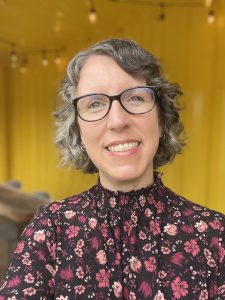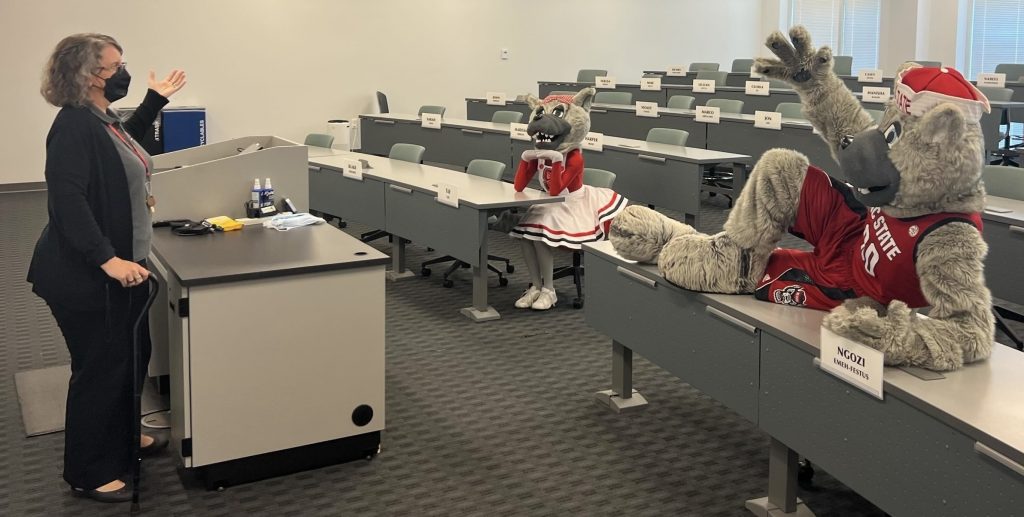
In the world of analytics, it’s common for professionals to struggle with communicating their findings to non-technical audiences or high-level stakeholders. Whether you’re new to the field or an experienced analyst, the ability to translate complex data into meaningful insights for diverse audiences is a crucial skill.
At the Institute for Advanced Analytics (IAA), communication, storytelling, and presentation skills are integrated throughout the program. To understand the reasoning behind this approach, I interviewed Dr. Sarah Egan Warren (Dr. SEW), who leads the communication curriculum at the IAA.
Aishwarya: How did you get started with teaching communication in the context of data analytics? Did you always want to be a professor?
Dr. SEW: When I went to graduate school for technical communication, I became a teaching assistant, and that’s when it clicked for me. I loved working with technical people, especially helping them figure out how to communicate their findings to non-technical audiences—coworkers, bosses, clients, or the public. After working at SAS for a short time and teaching undergraduate engineering students at NC State University for a few years, I joined the Institute for Advanced Analytics to teach communication. I started as a visiting lecturer, but I’ve been here full-time since 2015.
Aishwarya: For data science professionals, why is communication so important?
Dr. SEW: Explaining your findings in a way that makes sense to others is a vital skill. Data science professionals are excellent at using logic, statistics, and figures, but that’s not always enough to persuade an audience. It’s important to understand who you’re speaking (or writing) to and tailor your message accordingly. Communication is essential for career advancement. At the Institute, we want students to develop both technical and communication skills, and that’s what employers are looking for—graduates who can do both well.
Aishwarya: Data scientists often collaborate with domain experts from different industries. Does communication help in those situations?
Dr. SEW: Absolutely! Communication and collaboration are invaluable skills. Data professionals may switch industries while working in data analytics, and those communication and collaboration skills are transferable. Whether it’s adjusting to a new field or learning how to engage different audiences, strong communication helps bridge gaps in understanding. This flexibility is key to adapting to new environments and ensuring that your findings are understood and appreciated by various stakeholders.
Aishwarya: In our communication classes at the IAA, we use dashboards and check-ins regularly. Can you tell us how those became part of your teaching method?
Dr. SEW: I’ve always worked with very technical people, and I realized that writing long narratives to provide feedback wasn’t effective. Students would look at their grades but rarely engage with the details of their feedback. I was already using dashboards to track students’ progress, and then it clicked—why not share these dashboards with students? That way, they could see their improvement over time the same way that I was seeing it. Especially with something like presentation skills, which are very nuanced, showing progress visually helps students understand where they are excelling and where they need some improvement. The dashboard allows them to track their progress and focus on specific areas, like filler words or eye contact. The dashboards also let me know what I should emphasize during class–I can track trends over time and adjust to the needs of the current class.
Aishwarya: Having a visual representation of our progress definitely makes it easier to track and remember improvements.
Dr. SEW: I change the dashboard every year, always tweaking it based on student feedback. The version you’re using now has evolved to separate content and delivery scores, for example, which wasn’t the case initially. It’s all about helping you see where you’re improving and where there’s room for growth.
Aishwarya: It’s also a great example of what we’re learning—continuous improvement, incorporating feedback, and using data to inform decisions. It mirrors what we do in data science projects.
Dr. SEW: Exactly! I’m trying to model what we want you to do as data professionals—gather data, analyze it, get feedback, and then use that information to improve. The goal is not just to provide an example but to give you an actionable tool to understand and refine your communication skills.
Aishwarya: The regular check-ins are another unique part of the course. How did that practice start?
Dr. SEW: The check-ins started long ago when I first began teaching in the late 1990s. I used to have students write a “one-minute paper” at the start of class, responding to a question on the chalkboard (yes! a chalkboard!). It helped them shift gears and get into the mindset of communication. Often students added personal notes, like mentioning their birthday or expressing concerns about their health. It became a tool for me to connect with students and understand how they were feeling. When I came to the Institute, I started using a form to collect this information, which helps me gauge the general mood of the class and adjust my teaching if necessary. The check-ins give me valuable insight into how students are doing, and I can tailor the curriculum to reduce stress when I can.
Aishwarya: The ‘opt-out’ option in the check-ins reminded me of the ethics discussions we’ve had. It feels connected to the idea of respecting people’s choices with their data.
Dr. SEW: The opt-out option was actually suggested by a student, which was such a great addition to the check-ins. Feedback is important, but I never want to force anyone to share if they don’t feel comfortable. It’s a small but important way to give people control over their participation, which ties into the broader discussions we’ve had about ethics and data privacy.
Aishwarya: You’ve been teaching for many years. Is there a transformation you’ve witnessed in students over the course of the program that stands out to you?
Dr. SEW: It’s hard to pinpoint one person because I think everyone who goes through this program is transformed in some way. Whether it’s communication, technical skills, leadership, or collaboration, the person who walks into orientation is never the same person who graduates. The students who truly embrace all the opportunities we offer, both in and out of the classroom, are the ones who grow the most. Even if communication isn’t their favorite part of the program, I know they’re still learning and changing, and it’s amazing to see that.
Aishwarya: For future students, do you have any advice on how they can make the most of the program?
Dr. SEW: Participate as much as you can, but also know your limits. It’s not possible to do everything we offer, but those who engage with the community, take part in optional activities, and push themselves outside their comfort zones will see the most growth.
Aishwarya: Last question: What motivates you every morning when you start your day?
Dr. SEW: I love my job, and that makes it easier to get up in the morning—even though I’m not a morning person! I find motivation in helping the next generation of data professionals, especially now that I’ve been able to integrate ethics into the curriculum. We’re at a crossroads in how we use data, AI, and technology, and I believe it’s important to help shape responsible, ethical data professionals. That’s what gets me out of bed, even when I don’t feel like it!

Dr. Sarah Egan Warren’s insights highlight the essential role communication plays in the world of data analytics. At the IAA, communication isn’t just an add-on; it’s an integral part of the curriculum, helping students bridge the gap between technical expertise and real-world impact.
Columnist: Aishwarya Murugan
